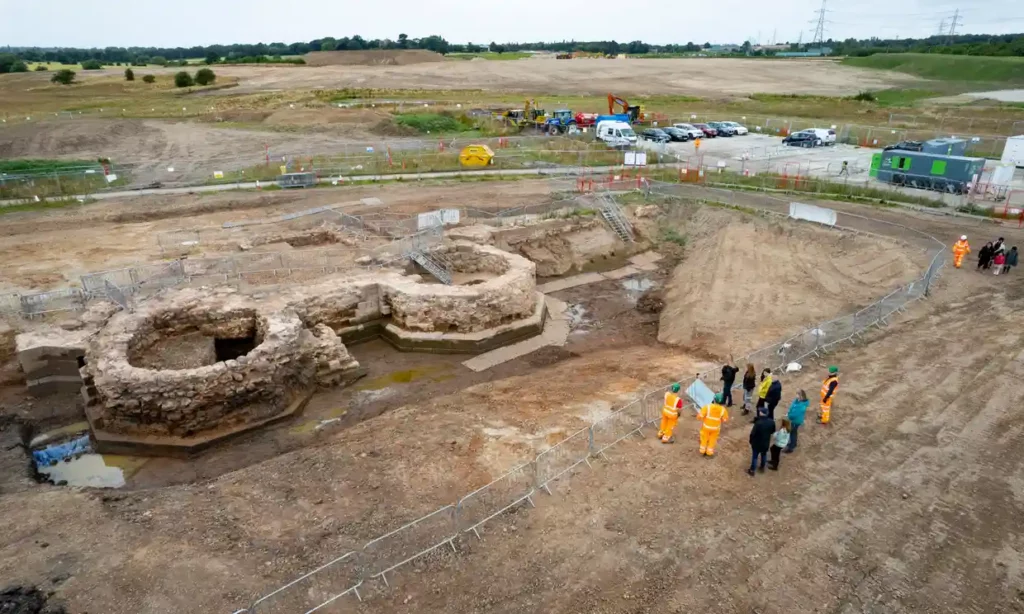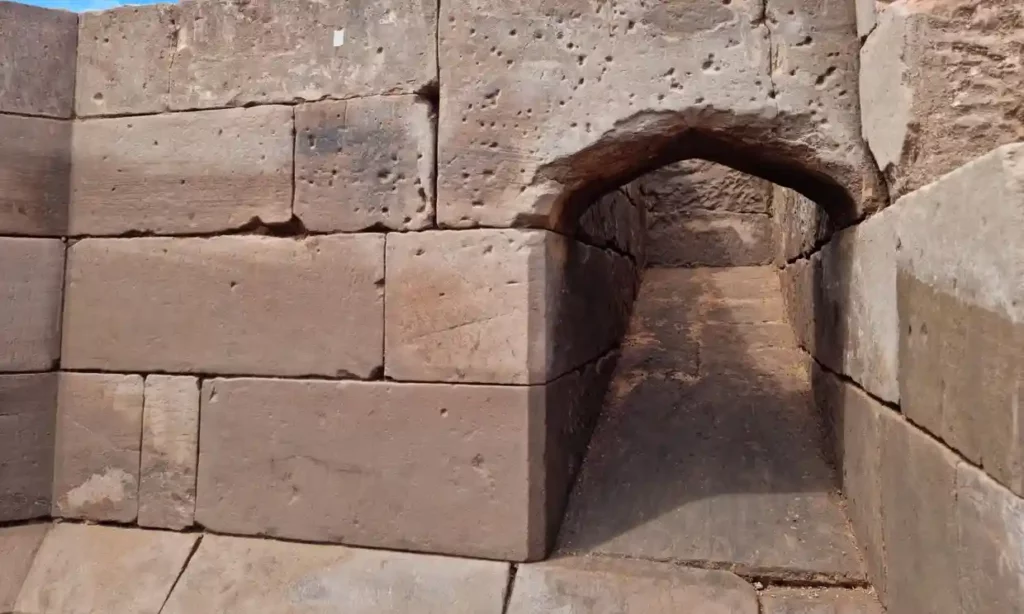‘Better than finding gold’: towers’ remains may rewrite history of English civil war

When archaeologists working on the route of HS2 began excavating a stretch of pasture in Warwickshire, they were not expecting to uncover what one of them calls “the highlight of our careers”. Their excavations revealed the monumental stone bases of two towers from a late medieval fortified gatehouse, the existence of which had been completely lost to history.
While that find was remarkable in itself, the ruins were even more significant than they first appeared – and might even rewrite the history of the English civil war.
Peppering the sandstone walls were hundreds of pockmarks made by musket balls and pistol shot, showing that the building had come under heavy fire.
Experts think this may be evidence that the gatehouse was shot at by parliamentarian troops heading to the nearby Battle of Curdworth Bridge in August 1642, which would make this the scene of the very first skirmish of the civil war.
The finds were “a real shock”, said Stuart Pierson of Wessex Archaeology, who led excavations on the site. “The best way to describe it is that we were just in awe of this tower.
“People always say that you want to find gold in archaeology, but I think for a lot of us finding that tower will always be better than finding gold. I think it’s the highlight of our careers finding that, and I don’t think we’re going to find anything like that again.”

The team knew that a large Tudor manor house had stood somewhere near the site at Coleshill, east of Birmingham, but its location had been lost. As they started excavating, they were astonished at the state of preservation of its vast ornamental gardens – larger in scale than at Hampton Court.
Pierson had said to colleagues that he expected there might be the remains of a gatehouse, “but we figured a small box structure. We weren’t thinking anything involving towers.” He was on holiday when the first walls were uncovered. “My colleagues say their favourite memory from the site was my expression when I [returned and] saw this complete tower,” he said.
Taken together, the finds make the site “nationally significant – and a bit more”, he added.
In the lead up to the civil war, which pitched forces loyal to King Charles I against parliamentarian soldiers seeking to topple him, Coleshill Manor was in the hands of a royalist, Simon Digby.
The position of his grand home, next to a key strategic crossing of the River Cole, would have put it directly in the path of parliamentarians on the march to Curdworth Bridge. While it is impossible to prove, experts think it is highly likely that it is their musket balls – dozens of which were recovered from the site – which struck the gatehouse on this journey.
While the discovery potentially rewrites the history of the start of the civil war, Pierson said, it can also tell us more about the experience of those living through it. “What it gives us is a more personal [insight] to the civil war.
There are always stories about royalty and the lead parliamentarians, but there’s not so much focus given to the people themselves, even the upper classes who found themselves involved but weren’t necessarily really part of it.”
The discovery features on Digging for Britain on BBC Two at 8pm on Sunday 22 January.
